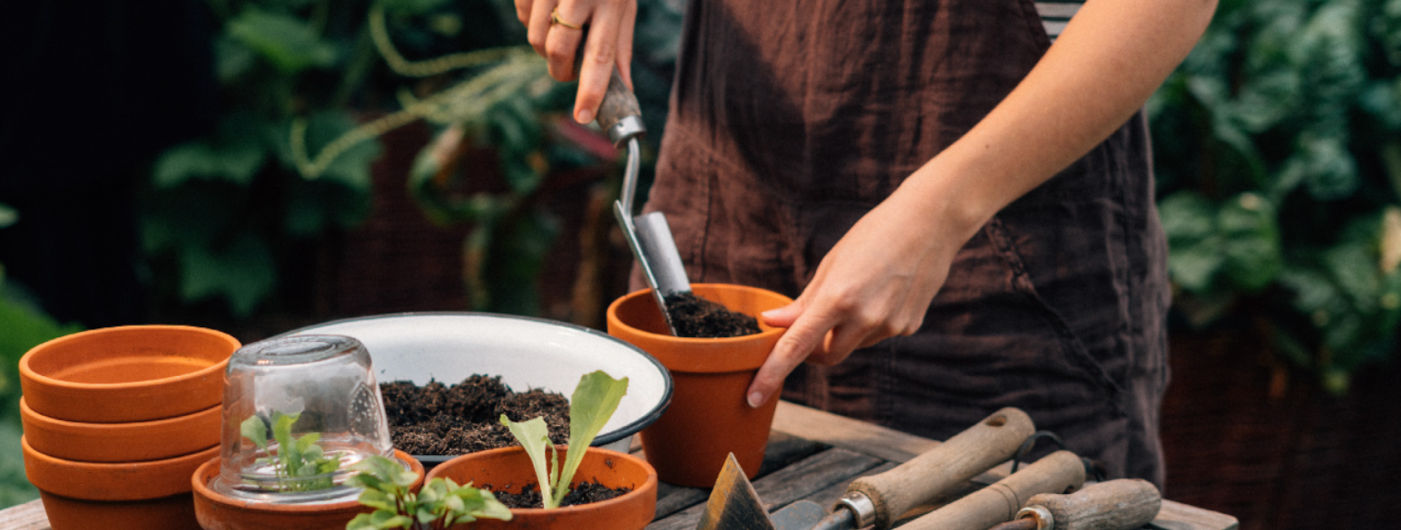Pricking out your March sowings – the how, when and why
What is pricking out?
Traditionally seeds are sown quite densely in seed trays and then transplanted into small pots or modular planting trays after they have germinated. This process is called ‘pricking out’ – the ‘pricking’ referring to the action of a pointed instrument or tool (which could be a gardener’s dibber or widger tool) which is used to free the tender seedling from the growing medium.
Gardeners’ dibbers and widgers are traditionally made of wood – but a blunt knife or small spoon could also do perfectly well.
How to prick out seedlings
Loosen the earth with your dibber tool and carefully raise the seedling from the compost. The dibber can also be used to make a hole big enough for the seedling in the new pot. Place the seedling in the new hole. It’s important to work carefully and make sure you’re not damaging the tiny, tender plants.
Why have this extra stage at all?
In principle the seeds could be sown individually in separate pots to start with – and for many plant species this absolutely does make sense. But there are also good reasons for sowing in trays and then pricking out the seedlings:
- Space: Plants that need warm temperatures to grow are often started on a windowsill or in a heated propagator. This means that the space available is often limited and would only be able to hold a small number of pots. Yet if they’re sown densely the same space can be used to start hundreds of seedlings.
- Seeds with low germination rates: Some species germinate erratically and have low germination rates – here, too, it makes sense to prick out seedlings.
- Selection: Often gardeners sow more than they need and select only the strongest seedlings for pricking out.
- Stimulating root growth: With some species – celery for instance – the pricking out process actually stimulates root formation. Others, though, like carrots and squashes, tend to react badly to being transplanted.
When to prick out
The basic rule is to prick out as soon as the first true leaves, after the seed leaves, are showing. Older seedlings don’t grow on so well. In our experience watering the seedlings with a diluted seaweed extract can help to ease the shock of transplantation.
How deep to plant seedlings
Many seedlings are transplanted a little deeper than before (sweet pepper and tomato). Others a little higher (lettuce and celery). But transplanting at the same height will also work perfectly well.

Tomato seedlings in a seed tray

Tomato seedlings after pricking out

